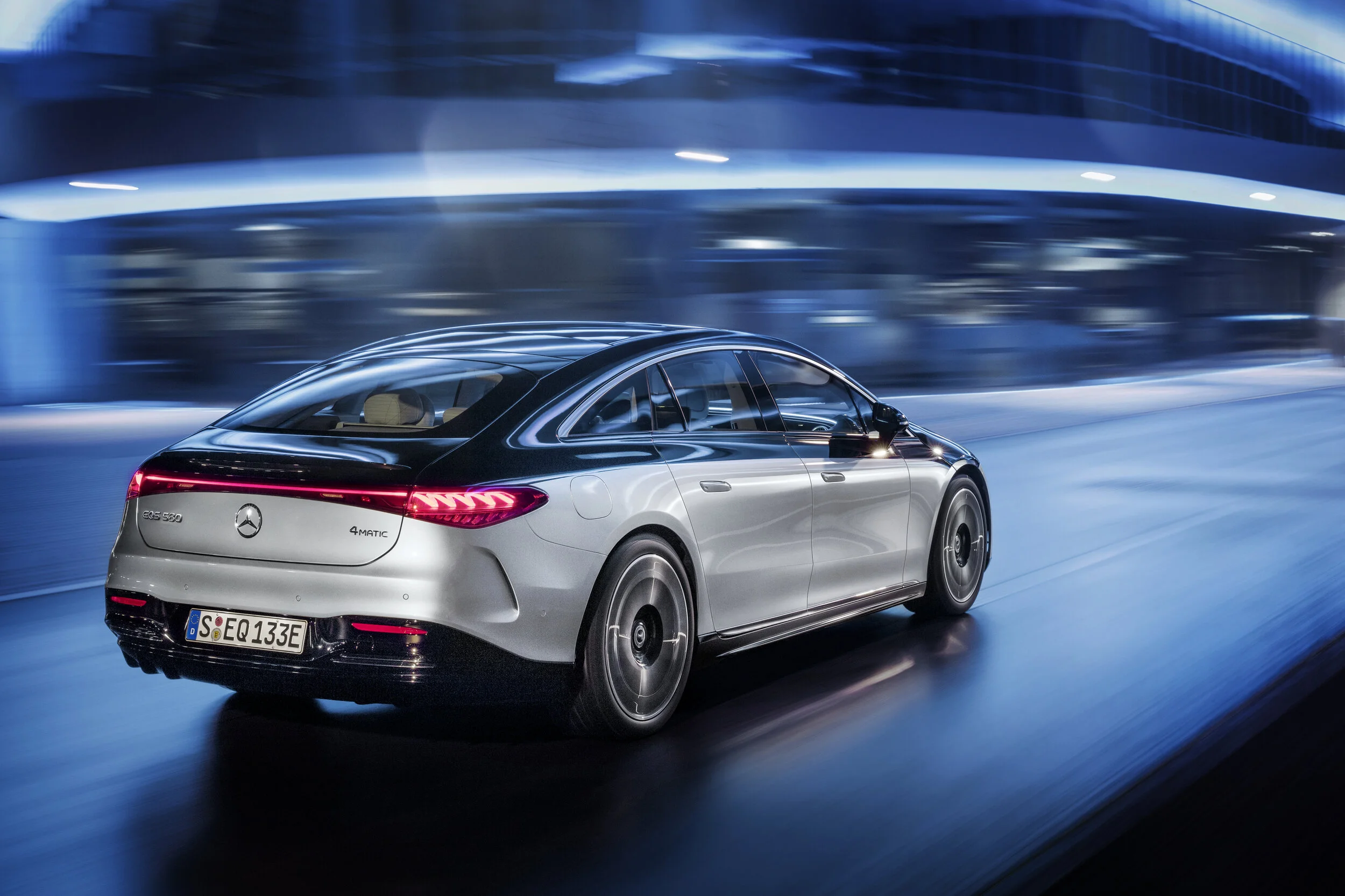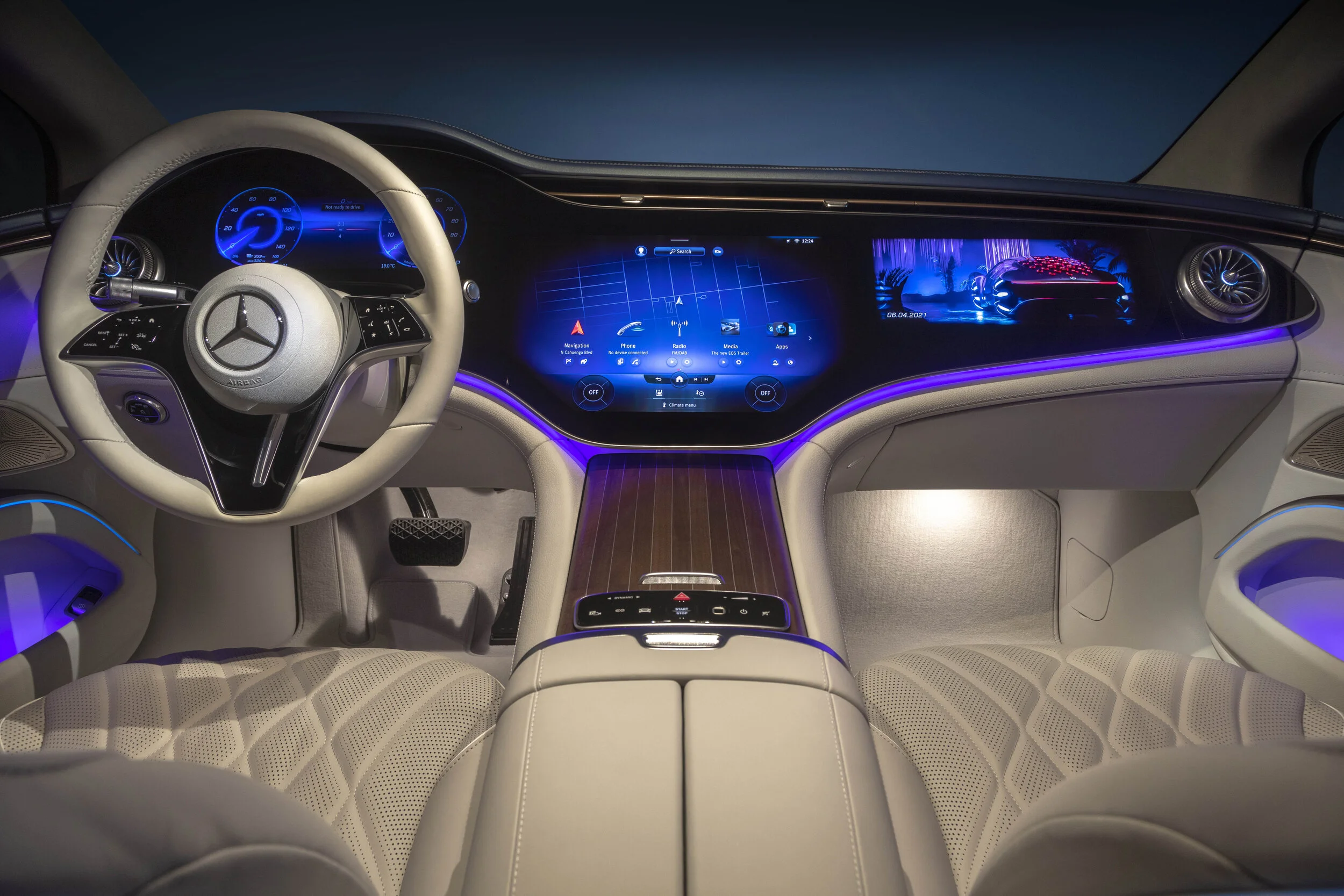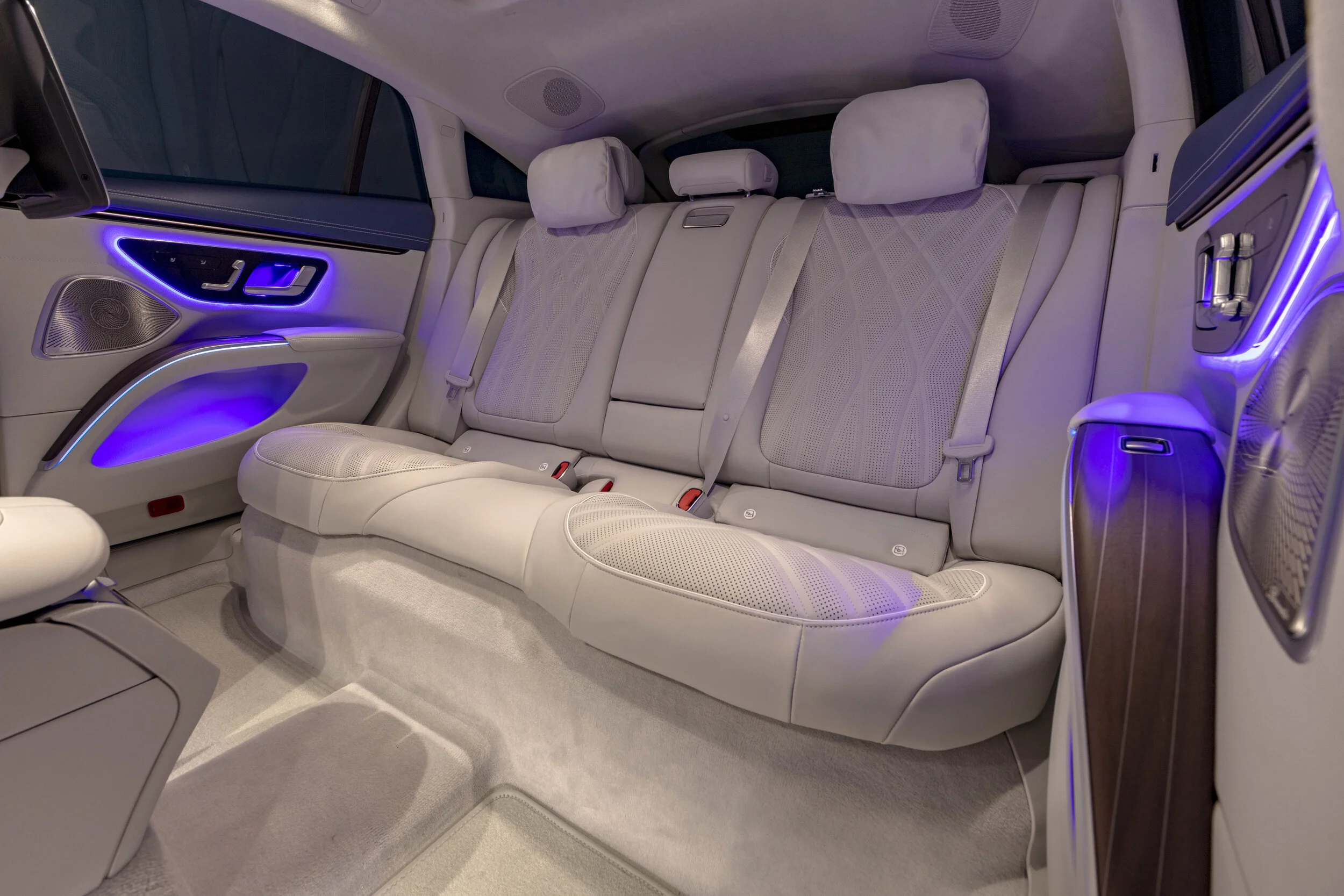Mercedes-Benz EQS – Stuttgart Unveils Its Electric Flagship
By Edward A. Sanchez – April 15, 2021
For a period, the premium EV segment was a class of one: The Tesla Model S. As the years have progressed, there have been a few contenders, and a few interesting, but niche and peripheral models from premium brands, including the BMW i3 and i8, the Audi e-tron SUV, the and the Jaguar I-Pace. Largely absent from the EV space, with the exception of its B-Class, has been Mercedes-Benz. With the announcement of its EQ sub-brand, the premium German marque made its intentions of entering the EV space clear. The culmination of this initiative is the EQS, unveiled this week.
Comparisons to the Tesla Model S are inevitable. But the EQS comes to market just as other contenders are entering the ultra-luxury EV space as well, most notably the Lucid Air and a revived and reimagined Karma GSe-6. Not to mention the Porsche Taycan and Audi e-tron GT. However, the EQS stands out as a more distinct proposition and concept than any of the other models mentioned. Rather than trying to chase Tesla and Lucid down the sub-3-second 0-60 rabbit hole, the EQS will be initially released in two trims, both of which offering an acceptable and plenty brisk performance.
The EQS 450+ brings 329 hp to the party, with a claimed 0-60 time of 5.5 seconds. The EQS 580+ brings output up to 516 hp and drops the 0-60 time to 4.1 seconds. Both models are rated at a top speed of 130 mph. The EQS 580+ has a claimed WLTP range of up to 478 miles (770 km). Even assuming a 20-percent haircut for EPA ratings, that’s a range approaching 400 miles. The usable capacity of the EQS’ battery is 107.8 kWh. The EQS features a 400V platform (technically 396V), and a claimed 10-80 percent recharge time of 31 minutes at a DC fast-charging station.
While perfectly respectable, these performance stats are nowhere close to those claimed by the top-trim Air, Model S, or Taycan models. An AMG variant of the EQS is a near-given within the next few years, and we expect higher levels of power and performance from that model, or models.
OK, so the EQS will not star in dozens of YouTube “shock and awe” acceleration videos, at least not with the initial configurations. But does it need to? Taking the ICE-powered S-Class as a rough analog to the EQS, the S-Class has always stood for stately, dignified luxury and presence with more-than-adequate, but often not class-leading performance. The EQS is sure to offer quiet, confident performance, ample luxury features, and undeniable presence.
It also doesn’t necessarily have to compete in the cutthroat scrum of the volume sales race, although surely Mercedes would like it to sell competitively against the Model S and others in the space.
The EQS also currently has the distinction of having the largest continuous display panel on the market (for the moment) at 56 inches wide with the optional MBUX Hyperscreen, so it’s certainly not lacking for the tech “ooh, ahh” factor, which also includes optional automatic comfort doors, which deploy the handles as the owner approaches the car, and automatically opens the doors upon close approach. Somewhat reminiscent of the “Tokyo Taxis,” the MBUX system can allow the driver to open the front passenger or rear doors from the driver’s seat to pick up passengers or children from school (sure to make their schoolmates jealous).
As we have discussed many times on The Watt Car blog and podcast, the “normalization” of EVs is a good and necessary step to overcome the perception of “weirdness” among the larger motoring public. Although the S-Class is rare and expensive enough to not necessarily be considered “mainstream,” it is also nearly universally recognized as a high-water benchmark for refinement, technology, and luxury. It’s clear Mercedes is aiming for the same stratum with the EQS. While most of us will probably not be able to afford the EQS, it has suddenly made the premium luxury EV space a lot more interesting to watch.
(Images courtesy Mercedes-Benz)
- Podcast - Facebook - Google News - Twitter -













